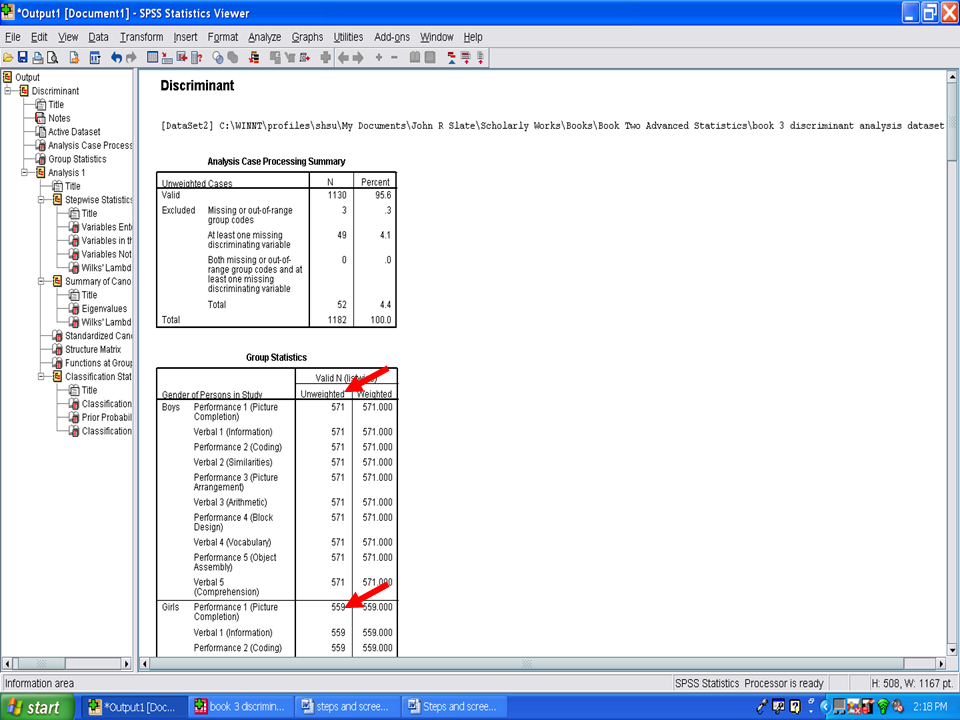Chapter 6. Discriminant Analysis: Part II

This chapter is published by NCPEA Press and is presented as an NCPEA/Connexions publication "print on demand book." Each chapter has been peer-reviewed, accepted, and endorsed by the National Council of Professors of Educational Administration (NCPEA) as a significant contribution to the scholarship and practice of education administration.
| John R. Slate is a Professor at Sam Houston State University where he teaches Basic and Advanced Statistics courses, as well as professional writing, to doctoral students in Educational Leadership and Counseling. His research interests lie in the use of educational databases, both state and national, to reform school practices. To date, he has chaired and/or served over 100 doctoral student dissertation committees. Recently, Dr. Slate created a website (Writing and Statistical Help) to assist students and faculty with both statistical assistance and in editing/writing their dissertations/theses and manuscripts. |
| Ana Rojas-LeBouef is a Literacy Specialist at the Reading Center at Sam Houston State University where she teaches developmental reading courses. Dr. LeBoeuf recently completed her doctoral degree in Reading, where she conducted a 16-year analysis of Texas statewide data regarding the achievement gap. Her research interests lie in examining the inequities in achievement among ethnic groups. Dr. Rojas-LeBouef also assists students and faculty in their writing and statistical needs on the Writing and Statistical Help website.
|
Your screen should now look like the one below: Now click on Statistics.
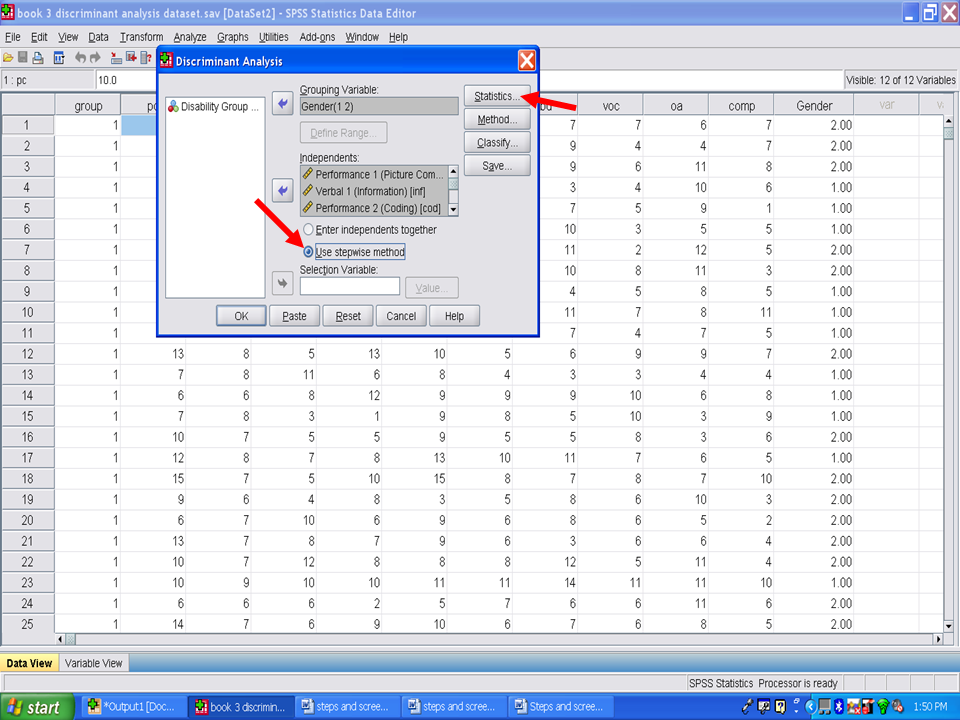
The following screen then appears.
Click on Means.
Click on Continue.
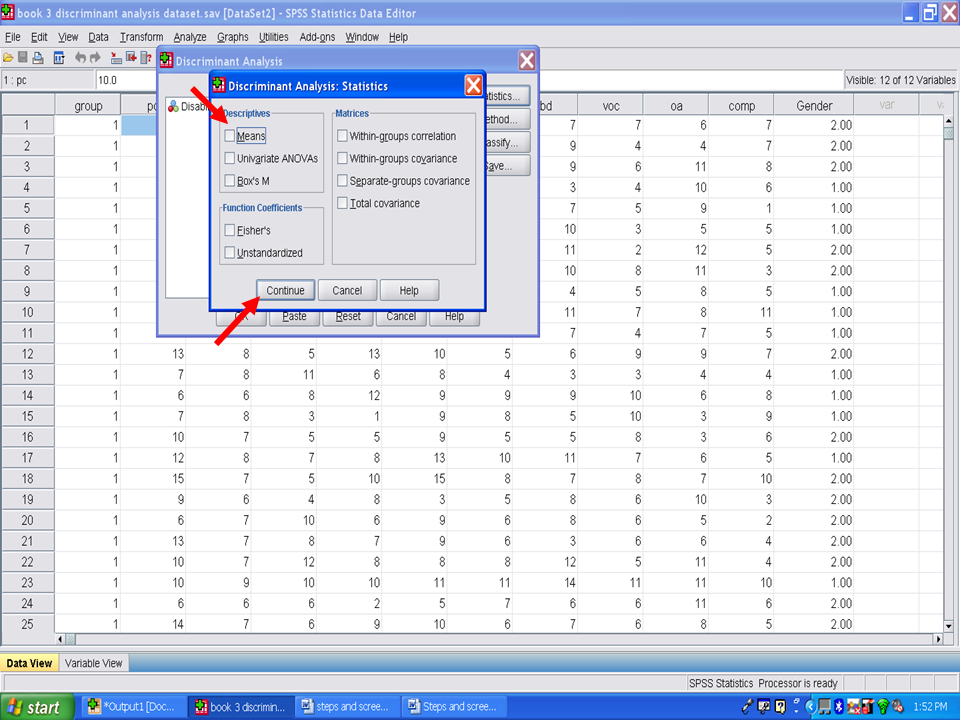
When the screen below appears, click on Method
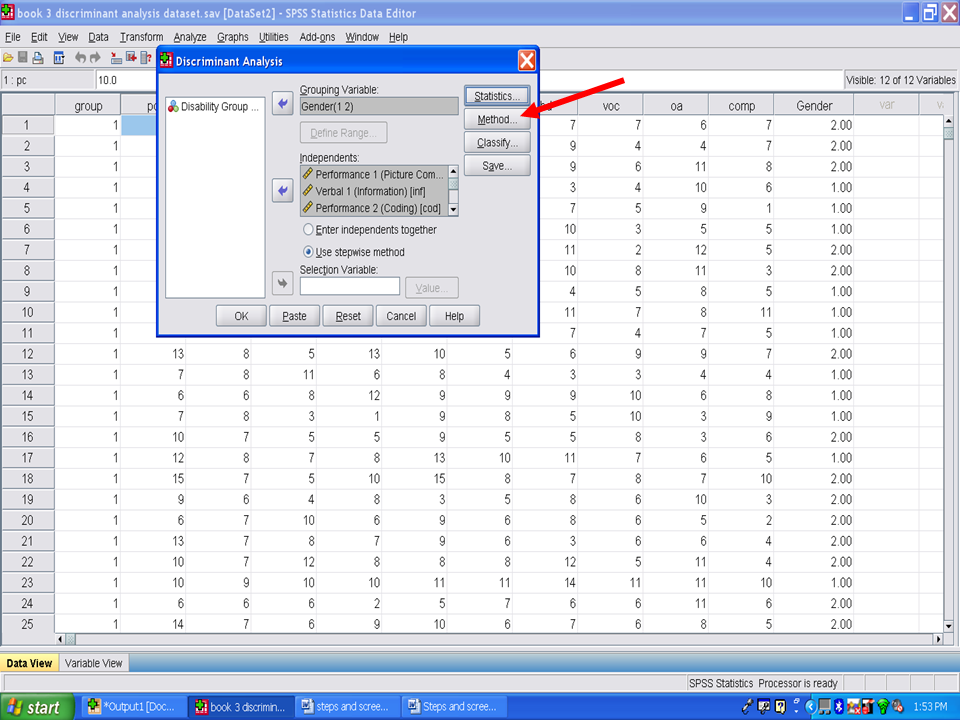
In the Method screen, we will use the default of Wilks’ lambda.
Click on Continue.

Then click on Classify.
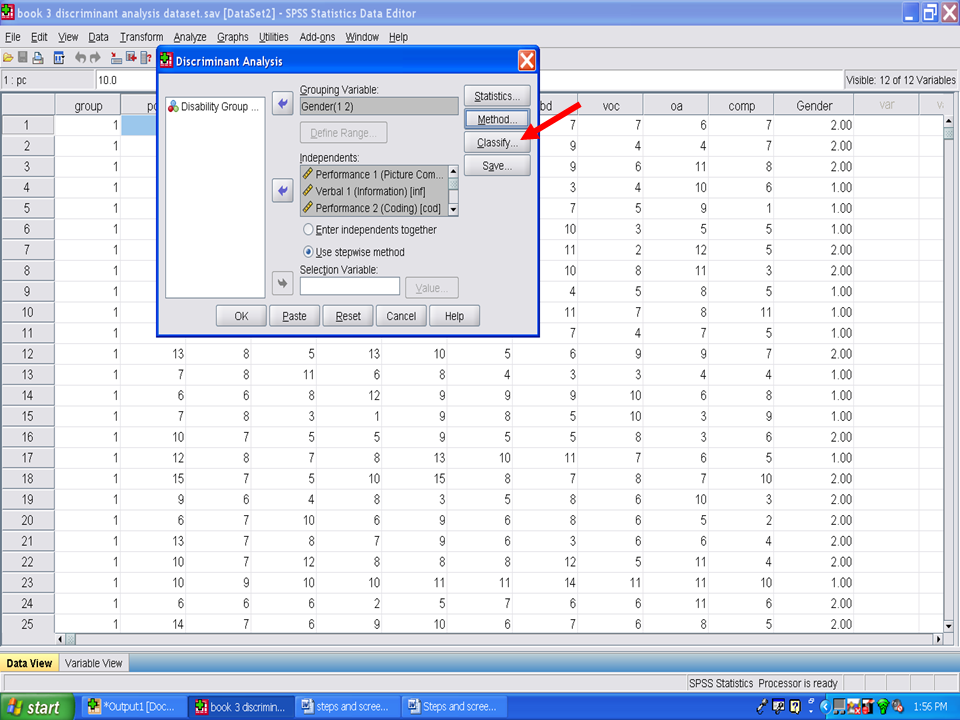
In the screen that appears, the All groups equal button is already clicked.
Click on Summary table under the Display.
Then click on Continue.
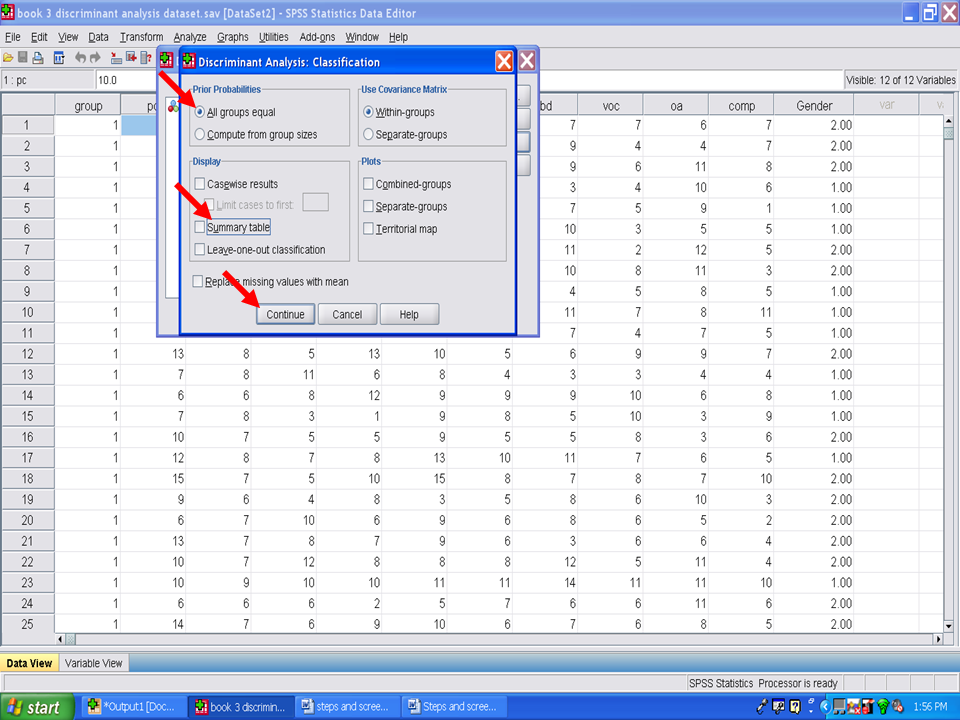
We are now ready to have SPSS calculate this procedure.
Click on OK.
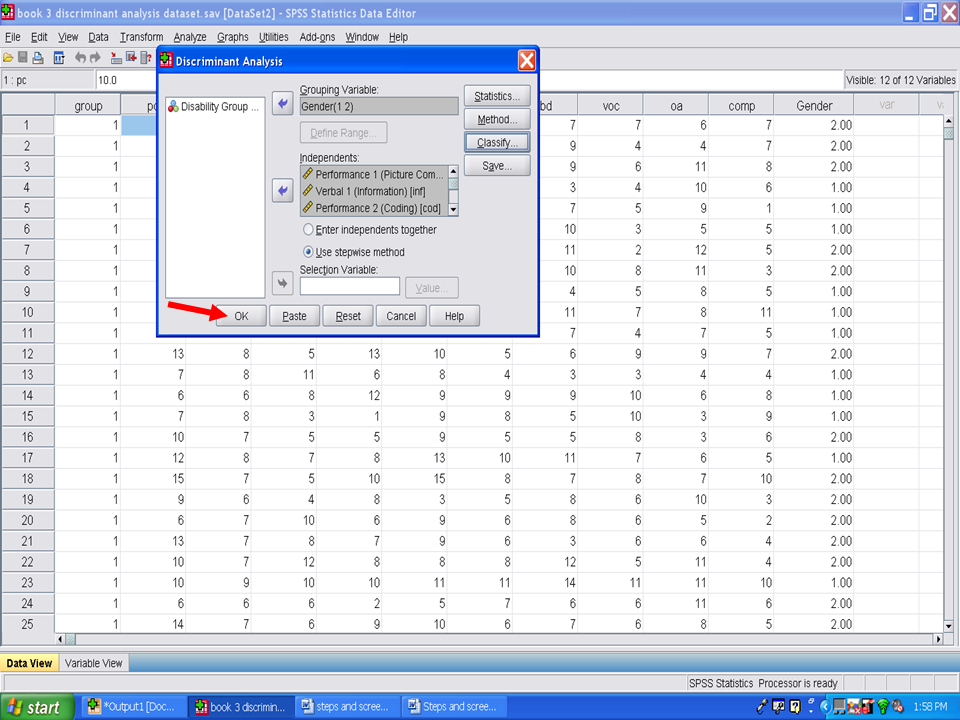
After clicking on OK, SPSS should send you to your output file. If not, click on the Output icon at the bottom of your screen.
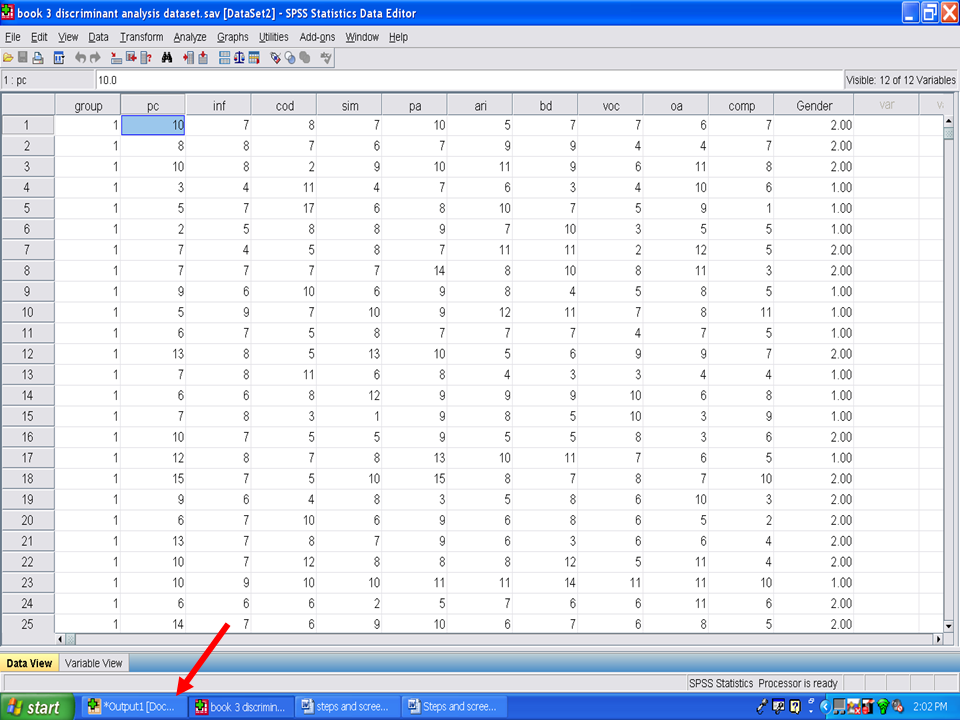
In the output screen, you should have the following output.
The first table shows you how many of your participants’ data were used in the analysis. In this example, we had a total of 52 participants whose data were not analyzed.
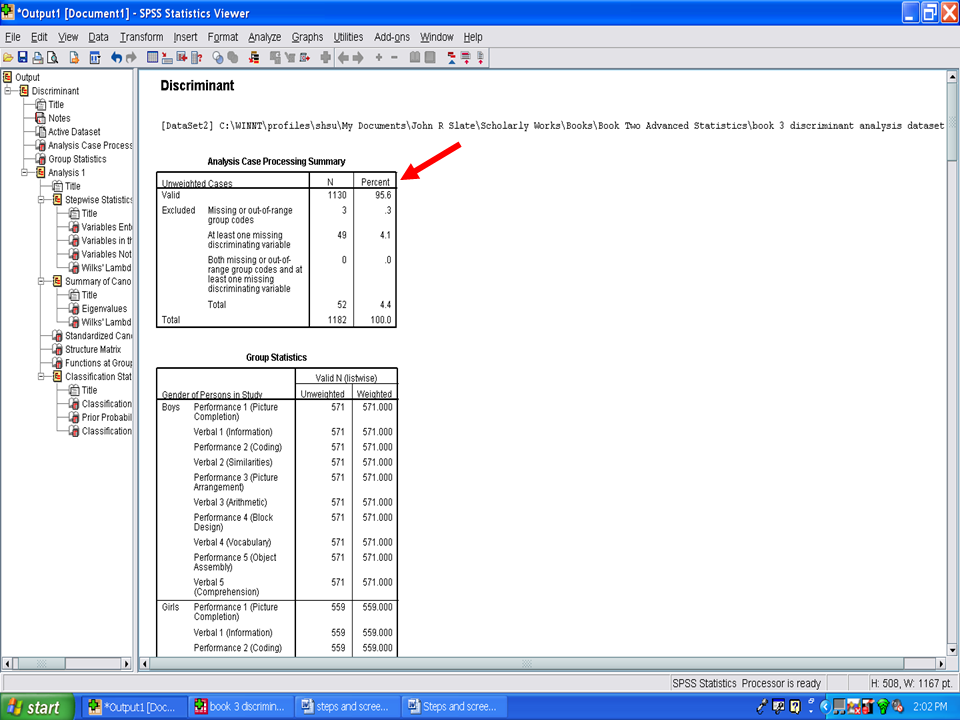
The second table in the output tells us we have 571 boys in group one and 559 girls in group two.
